SUMMARY
This is AI generated summarization, which may have errors. For context, always refer to the full article.
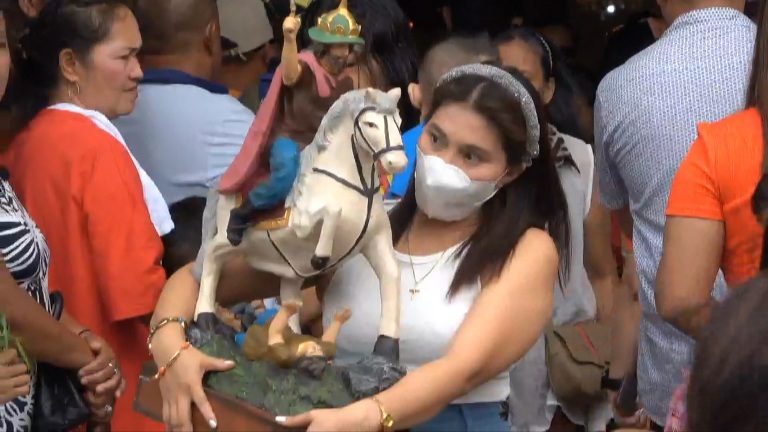
DAPITAN, Philippines – Roman Catholic devotees celebrated Dapitan City’s centuries-old Kinabayo (mimicking a person riding a horse) as church leaders and local historians became increasingly apprehensive that deviations for tourism and commercialization might eventually erase the city’s tradition.
The largely Catholic Dapitan celebrates Kinabayo on the Feast of Saint James the Greater every 25th of July.
During the celebration, the city holds a “moro-moro,” a play which typically portrays a conflict between Christians and Muslims, symbolizing the historical struggle between the Spanish colonizers (representing the Christians) and the Moros (representing the Muslims).
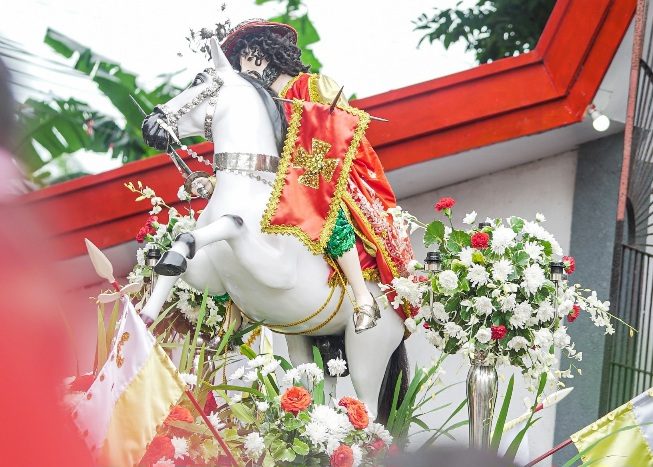
Some Muslim Filipinos find the term offensive as these plays, which date back to the Spanish colonial period, often depict battles, duels, and other confrontations that always culminate in the triumph of the Christian characters over their Muslim adversaries.
Dapitan tradition
On the day before, or the bisperas, the sinug (wave-like procession) is staged by religious devotees who wave parpagayo (croton) leaves and shout “Viva Senor Santiago” as a priest takes the image of the patron saint out of the church and passes it over to the mayor. The mayor then carries it on his shoulders around the plaza and to the saint’s waiting white horse.
In an article, the Dapitan Historical Society stated, “Since there were a few horses in Dapitan for the reenactment of the battle between Christians and Moors, devotees would make makeshift horses with bamboo and Japanese paper and put it on them. When asked where they were going, they would answer, ‘Moadto ko sa Dapitan mag-kinabayo’ (I’m going to Dapitan to mimic a person riding on a horse).”
In Dapitan, the sinug is a local adaptation of the Spanish adoration of Saint James, a tradition introduced between 1500 and 1600.
Historically, when the image of the saint was brought out of the church at noon, the Spanish Guardia Civil would raise their swords and exclaim “Viva Senyor Santiago,” accompanied by the band playing Marcha Real.
Dapitanons continued the tradition, but instead of swords, they started using leaves, and shouting “Viva Senyor Santiago” while the local band played Marcha Real, which they associated with their patron saint.
Church leaders in Dapitan stopped the annual play in early 1982 because they didn’t want to offend Muslims. However, the local government revived it in 1998 with the official launch of the tourism-driven Kinabayo Festival.
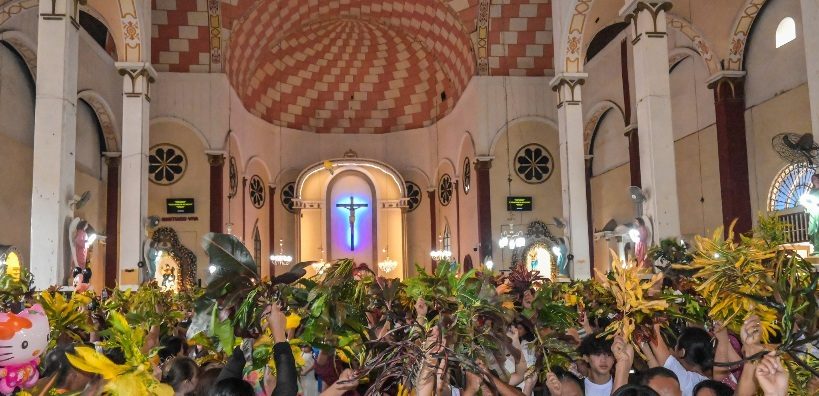
The festival also introduced street dancing and Hara sa Kinabayo (Kinabayo queen) and later changed it to Miss Dapitan. However, Dapitanons were not so receptive to the local government’s version of the activity, which was turned into a contest.
As the secular Kinabayo Festival activities increased, a local church leader said he was worried that “the growing commercialization of Kinabayo, which is purely a religious activity, may eventually vanish Dapitan’s unique tradition.”
Deviations
Some members of the Dapitan Historical Society said deviations have already been unconsciously dominating the traditional fiesta celebration in Dapitan.
Historian Gabriel Cad, a former curator of Rizal Shrine, said during a symposium three days before the feast day that the local government-sponsored festival must be completely separated from the Kinabayo, which the Catholic Church is having to preserve Dapitan’s traditions.
“I am a purist history teacher, and I have been advocating for the preservation of our tradition,” said history professor Rex Hamoy of the Jose Rizal Memorial State University and a member of the local historical society.
However, Nicanor Tiongson, professor emeritus at the University of the Philippines Film Institute of the College of Mass Communication, asserted that there was no such thing as an authentic traditional celebration, and “everything has variations”.
“When you say authentic, from whose definition? From you? Tradition changes with each period. Who can say that the moro-moro or the sinug are still the same as they were during the Spanish time. We have to accept that these change according to the needs of the times,” Tionson argued.
Philippine Information Agency (PIA) Director-General Jose Torres Jr., a member of the Dapitan Historical Society, said, “If we are real Christians, and we believe that our faith is strong, we should not be afraid of whatever challenges that come our way.”
Torres told Rappler on Monday, July 24, that fiestas are community celebrations, and these celebrations evolve.
“I know that purists are just protecting the traditions of the Church, but nobody can prevent deviations. It’s the community’s expression of faith. We should adapt to the changing times without forgetting our faith,” Torres said.
Controversial play
Tiongson, who studied the different “moro-moro” in the country, said Dapitan’s Kinabayo was the reenactment of the 8th-century Battle of Covadonga, which started the reconquista (reconquest) of the Moors of Northern Africa by Spain.
Hamoy, however, said Dapitan opted to follow the “mythical battle of Clavijo on which Saint James the Greater, dressed like a general on a white horse, supposedly appeared and helped the outnumbered Christian soldiers who drove away the Moors from Spain.”
Father Patrick Dalangin, the parish priest of Dapitan’s Saint James the Greater Church, said local Catholic leaders stopped holding the annual play six years after the signing of the Tripoli Agreement so as not to offend Muslims.
“The church was not part of the Kinabayo Festival, and the ‘moro-moro’ was revived by the local government,” Dalangin said.
Hamoy, however, said Dapitanons hold Islam and the culture and traditions of the Muslim Filipinos with respect.
“They (Muslims) will also respect if the Church revives the old ‘moro-moro’ or Kinabayo that has been passed from generation to generation in our community,” he said. – Rappler.com
Add a comment
How does this make you feel?

![[OPINION] On divorce and Filipino values](https://www.rappler.com/tachyon/2024/04/divorce-filipino-values-april-24-2024.jpg?resize=257%2C257&crop_strategy=attention)

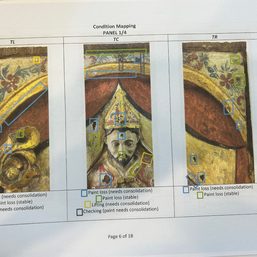

![[OPINION] Church heritage is God’s story](https://www.rappler.com/tachyon/2024/04/church-heritage-april-26-2024.jpg?resize=257%2C257&crop=409px%2C2px%2C1077px%2C1078px)
![[OPINION] Stop getting owned by Apollo Quiboloy](https://www.rappler.com/tachyon/2024/04/tl-stop-getting-owned-by-quiboloy.jpg?resize=257%2C257&crop=271px%2C0px%2C719px%2C720px)
![[Judgment Call] Is Rappler an ‘enabler’ of Catholic ‘copycats’?](https://www.rappler.com/tachyon/2024/04/catholics-copycats-april-18-2024.jpg?resize=257%2C257&crop=418px%2C0px%2C1080px%2C1080px)
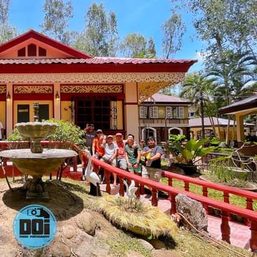


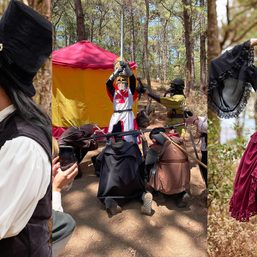
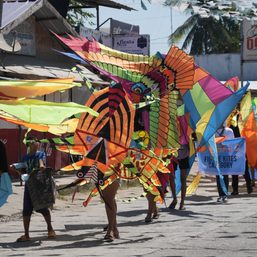





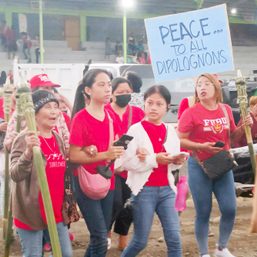



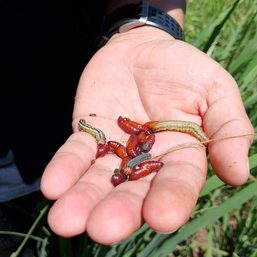
There are no comments yet. Add your comment to start the conversation.